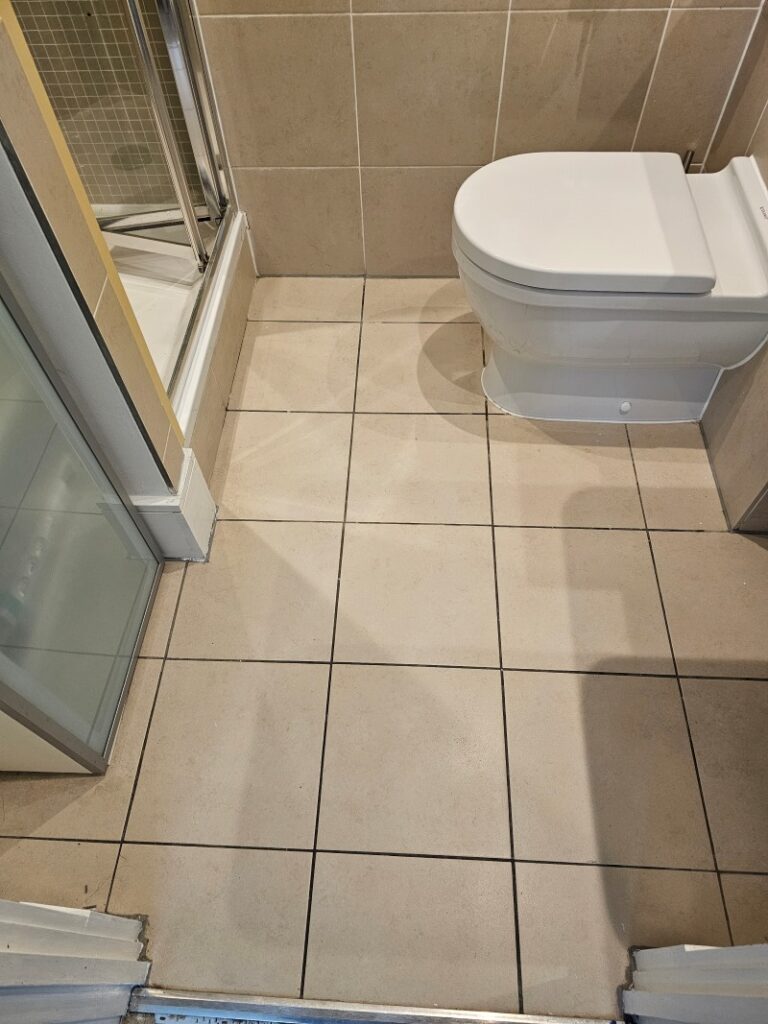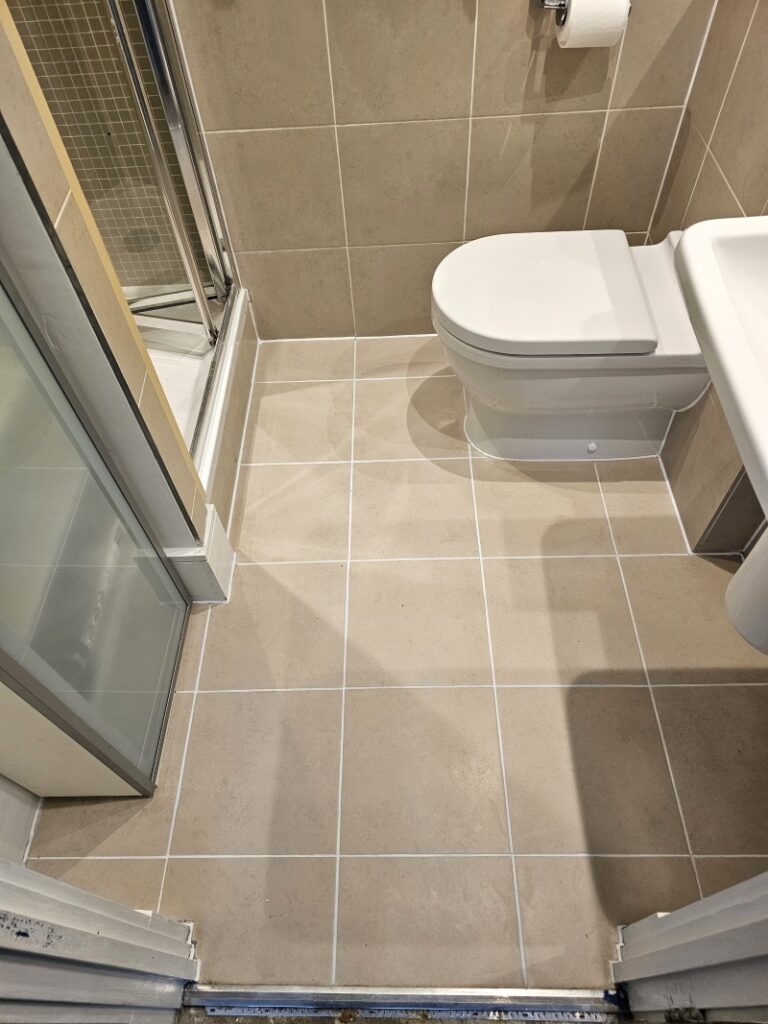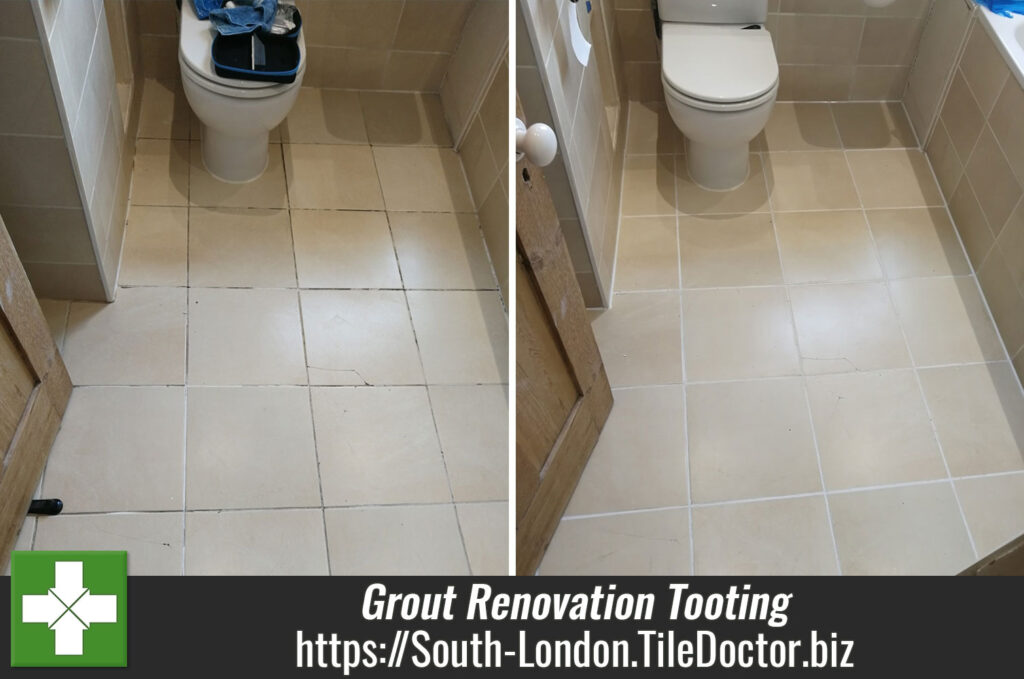Grout Recolouring of a Ceramic Tiled Bathroom Floor in Lampton
This client from Lampton near Hounslow was unhappy with the appearance of the grout in their Ceramic tiled bathroom floor and wondered if anything could be done to improve it. The grout was originally white to match the wall tiles and over the years it had darkened. This is quite a common problem with grout, especially in conjunction with glazed ceramic tiles; the glaze makes the tile impervious to water resulting in dirt being washed into the grout lines during cleaning. The rough cementitious surface of the grout traps the dirt eventually causing it to darken.

I asked for some photographs, and we discussed the various options over the phone. I’m not a fan of replacing grout as it takes a long time, generates a lot of dust and you risk chipping the tiles in the process, also there is every chance the problem will come back. I therefore recommended cleaning the grout and then applying a Tile Doctor Grout Colourant in White.
Grout Colouring is much quicker than re-grouting and you have the additional advantage of the colourant forming a waterproof barrier over the grout thereby making it much easier to keep clean and protecting the grout underneath. The Tile Doctor range of grout colourants come in eleven different colours with White being the most popular.
I asked for some dimensions and the size of the tile. From that I was able to work out an accurate quote for doing the work including the replacement of mastic sealant where needed. Happy with my quote we agreed a date for the work to start which should take less than a day to complete.
Cleaning the grout in a Ceramic Tiled Bathroom
Work started by stripping out the silicone between the floor and wall tile, then cleaning up the grout with Tile Doctor Grout Colourant Pre-Treat cleaner. This is an acidic cleaning solution that is sprayed onto the grout and then scrubbed in. This cleans the grout joints, and the acidic nature of the cleaner helps prepare the grout to achieve a better bond with the colourant. Once done the grout was wiped with a wet sponge to remove the dirt and then dried ready for the colourant.
Sealing the grout in a Ceramic Tiled Bathroom
Once the grout was dry a White grout colourant was painted onto the grout using a small colourant applicator that screws onto the top of the bottle, wiping off any excess from the tile as I went.
With the grout colouring complete I ran a bead of fresh White silicone sealant around the perimeter of the floor and the job was complete. A fairly simple process but very effective and in this case, it transformed the appearance of the bathroom making it far more inviting.

Professional Restoration of Grout in a Ceramic Tiled Bathroom in Southwest London
Grout Recolouring of a Ceramic Tiled Bathroom Floor in Lampton Read More »





